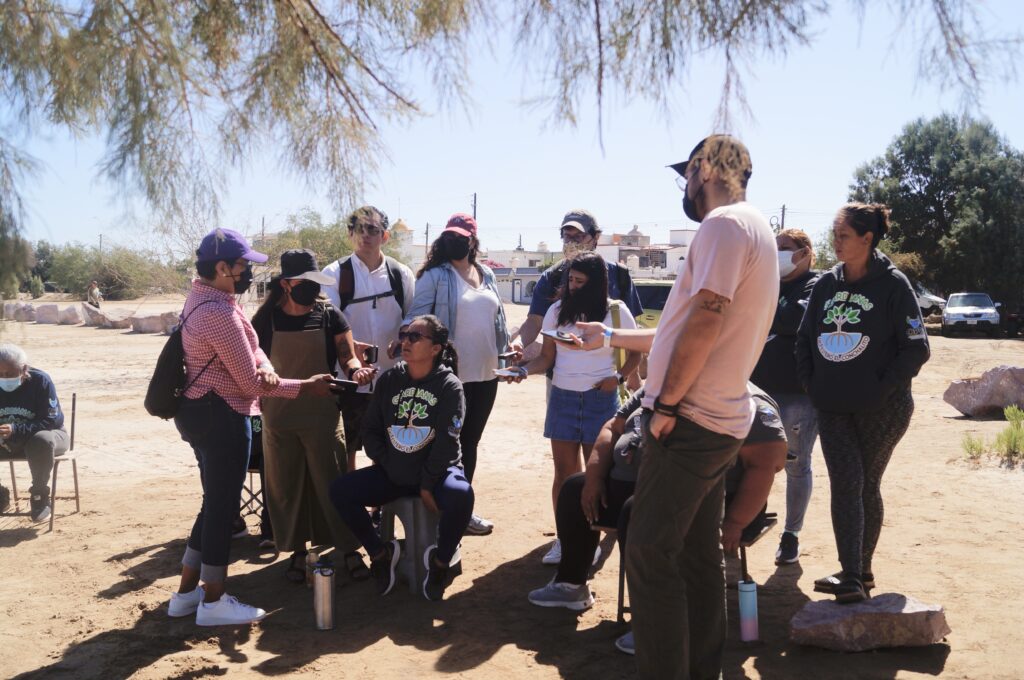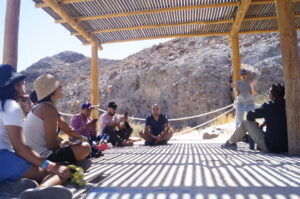What happens in the ocean has a direct impact on the lives of people outside of it. Even more so in Mexico, which has a coastline extension of more than 6,800 miles and where there are at least 150 coastal municipalities. This is why the Mexican organization Causa Natura has launched the Journalism Network of the Sea (Repemar, for its acronym in Spanish), an initiative that seeks to coordinate journalists interested in marine issues, provide support, guidance, training and financing opportunities.
“It has become increasingly evident that environmental journalism cannot turn its back on what happens to the oceans. Although in Mexico there are other networks that bring together environmental journalists, we saw a gap precisely on marine issues,” Juan García Hernández, data journalism coordinator at Causa Natura and founder of the network, told LatAm Journalism Review (LJR).
The network was made possible by financial support from Internews’ Earth Journalism Network which works for ecological conservation and enables journalists from developing countries to cover the environment more effectively. Currently, the first block of network reporters has been formed. It is composed of journalists from the northwestern region of Mexico, specifically the states of Sinaloa, Sonora, Baja California and Baja California Sur.
“It was considered an important region for its ecological and marine riches, and in terms of what happens in fishing production. The idea is to be able to form two other blocks with participants from other regions of Mexico, such as the east and south east of the country. Thus, by the end of the year, we can have around thirty journalists in the network,” García explained.
Last May, 10 journalists gathered in La Paz, capital of the Mexican state of Baja California Sur, for the first meeting of the Journalism Network of the Sea. In the two-day meeting, the participants were able to get an overview of the environmental history of the region from a historian, take a tour of various parts of the city and learn about successful environmental initiatives in the area.
“When I found out about the call, I applied because I am interested in continuing to train myself to do more and better specialized journalism. Especially since I started to venture into the subject just three years ago with the creation of Son Playas, so I still have a lot to learn and improve," Raquel Zapien, founding director of Son Playas, a media outlet specializing in the environment and coastal ecosystems, told LJR.

The first meeting of the network was held in May 2022 in La Paz, capital of the Mexican state of Baja California Sur (Photo: Patricia Ramírez of Causa Natura)
Son Playas is the first media outlet specialized in the environment in Sinaloa. According to Zapien, the initiative arose from her concern about the deterioration of the natural environment and the constant pollution of the beaches. So she decided to explain the environmental crisis at the local level, that is, from what people know and live on a daily basis.
“In small and medium-sized towns, like Mazatlán [where I live], there are practically no training options for journalists. So building networks is important to update yourself and also to have support and/or guidance, especially if you are an independent journalist,” Zapien explained.
Another journalist who decided to participate due to the potential of the network to create collaborative ties is César Ernesto Hernández, editor-in-chief for the magazine Espejo, who lives in Culiacán.
“I decided to participate because of the opportunity to learn about other contexts, to see stories and parallel situations that are happening in other areas of the country. The idea is to be able to make more content on these issues, especially collaborative and with a high degree of impact. I have realized that currently with the energy crisis generated by the war in Ukraine, the inflation crisis, the battles for lithium and energy reconversion, special importance is placed on issues with natural resource and energy angles,” Hernández told LJR.
Environmental journalism is a beat that has been growing in recent years in Mexico and more and more journalists are interested in bringing these issues to society and hope they are of interest. However, this has not necessarily translated into the creation of specialized environmental media outlets or exclusive sections in traditional media; the journalists consulted for this article agree.
“It seems to me that in Mexico there are currently a good number of environmental journalists, there is talent and people with experience. But, there is still a lot of room to gain for environmental journalism and in terms of what it can offer to audiences,” García said. “Environmental reporting in Mexico has intensified with the current administration of President Andrés Manuel López Obrador (AMLO) because several of his megaprojects precisely have a significant environmental impact. That has caused there to be an intersection between projects and the environment and it is necessary to scrutinize what is happening,” he added.

Vulnerability when covering environmental issues increases when working independently and in small towns (Photo: Patricia Ramírez of Causa Natura).
AMLO's government has been characterized by using violent and stigmatizing rhetoric towards the media and journalists, as confirmed by Reporters Without Borders (RSF). Additionally, year after year, Mexico remains one of the most dangerous and deadly countries in the world to practice journalism. So far in 2022, 12 journalists have been murdered in the country.
The coverage of environmental issues is not exempt from the risks suffered by Mexican journalists. In addition, the vulnerability of the journalist becomes much more palpable when he works independently and is in locations far from the big cities.
“Journalism itself is a high-responsibility, high-risk profession. Environmental journalism increases this risk because, behind environmental crimes and behind the exploitation of resources, there are regularly economic and political interests. And if you add to that being an environmental journalist, independent (without a backup team) who lives in a small town, the level of risk increases,” Zapien said. The founder of Son Playas also explained that local journalists are easier to identify or find, "usually they know you, they know where you live, what school our children go to, they can find us on the street, in the market. That makes us more vulnerable.”
A 2020 report from RSF found that at least 10 environmental reporters were killed globally in five years – one of the journalists being from Mexico. Perhaps the most recent high-profile case was that of Dom Phillips, a British reporter killed while reporting for a book on the Brazilian Amazon.
The call of the Journalism Network of the Sea in this sense, as explained by Causa Natura, is to support environmental journalists and form networks that minimize risks.
“Environmental journalists, like all journalists in Mexico, are exposed to risks that obviously must be considered when doing the job,” García said. “Environmental journalists must take care of each other and the formation of networks is a contribution in that sense.”